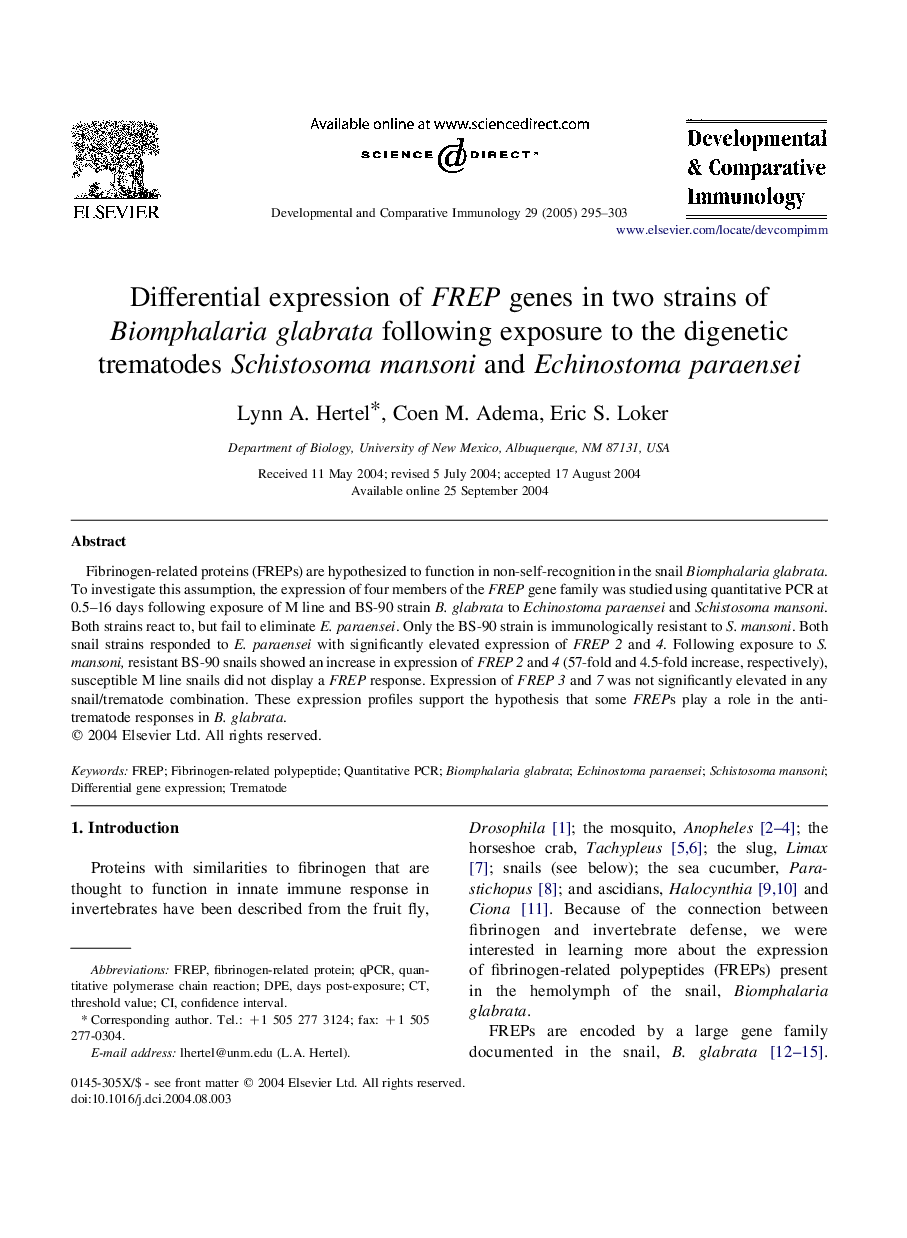| Article ID | Journal | Published Year | Pages | File Type |
|---|---|---|---|---|
| 8978119 | Developmental & Comparative Immunology | 2005 | 9 Pages |
Abstract
Fibrinogen-related proteins (FREPs) are hypothesized to function in non-self-recognition in the snail Biomphalaria glabrata. To investigate this assumption, the expression of four members of the FREP gene family was studied using quantitative PCR at 0.5-16 days following exposure of M line and BS-90 strain B. glabrata to Echinostoma paraensei and Schistosoma mansoni. Both strains react to, but fail to eliminate E. paraensei. Only the BS-90 strain is immunologically resistant to S. mansoni. Both snail strains responded to E. paraensei with significantly elevated expression of FREP 2 and 4. Following exposure to S. mansoni, resistant BS-90 snails showed an increase in expression of FREP 2 and 4 (57-fold and 4.5-fold increase, respectively), susceptible M line snails did not display a FREP response. Expression of FREP 3 and 7 was not significantly elevated in any snail/trematode combination. These expression profiles support the hypothesis that some FREPs play a role in the anti-trematode responses in B. glabrata.
Keywords
Related Topics
Life Sciences
Biochemistry, Genetics and Molecular Biology
Developmental Biology
Authors
Lynn A. Hertel, Coen M. Adema, Eric S. Loker,
